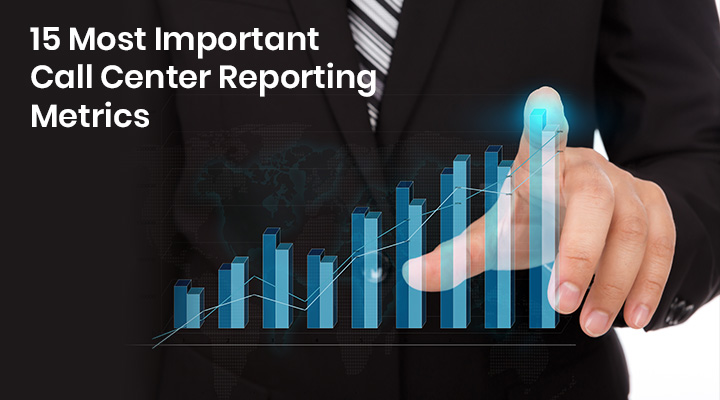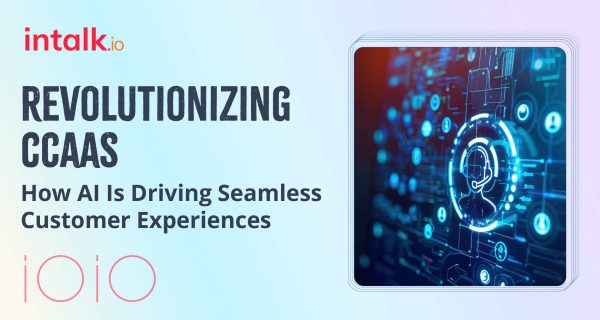“In God we trust; all others must bring data”
-William Edwards Dening
Contact centers are known to get the job done. If you wish to improve the overall customer experience of your organization, you either outsource your call center services to a third party or deal with it inhouse. Nonetheless, a contact center is meant to get tangible results at the end of it all. Here are a few metrics that can help managers keep a tab on all the important key performance indicators and work towards better results.
Average Handle Time:
This is an important call center reporting metric that assesses the overall efficiency of your agents. The average handle time is the average amount of time that an agent takes to complete one call. It is the sum of the call duration, the call hold time and the time taken to get work done after the call, divided by the total number of calls made. The Average Handle Time of your agents generally improves when they get a better understanding of the product or the service that the organization provides and get more familiar with the call center software.
Average Speed of Answer:
Customers appreciate it when a business responds to a query quickly. Quick query resolution is a sign of a good customer experience. This call center reporting metric helps a manager keep track of the speed in which a call is generally answered. The average speed of answer determines how quickly a call is answered when a customer reaches out to you. It is the sum of all the time spent by your customers in call queues, divided by the total number of calls handled by your agents. These calls include all calls that are attended to by your agents or the calls that are resolved in self-service options.
Self-service Accessibility:
Self-service accessibility shows the effectiveness of the self-service options that you provide to your customers. Self-service options, such as IVR, are kept in place to increase user engagement without increasing the workload of the team. A good self-service option effectively resolves the queries of a customer in minimum time without having to involve an agent in the conversation. This call center reporting metric is determined by keeping a track of the number of times callers choose a service option over a live agent to resolve their queries.
Average Queue Time:
Average queue time gives you an insight into the overall customer experience of your organization. This contact center reporting metric is determined by the total time your customers have spent in the call queues divided by the number of calls that your agents have answered Average Wait Time
Average Wait Time
Isn’t it irritating when your call is not connected to the support for a long time? Having a long waiting time reduces the overall customer experience of your business. This call center reporting metric helps you figure out the time that it takes a customer to get connected to a call center agent.
Percentage of Calls Blocked:
Percentage of calls blocked gives the manager an insight into the number of calls that have received a busy tone while they have tried to connect to an agent. This reflects the accessibility of your agents while customers try to connect to them.
Call Abandonment Rate:
Waiting for an agent for too long can get quite tedious! Most callers simply hang up the call if they aren’t connected quickly to an agent. This call center reporting metric shows the total number of callers that hang up the call before an agent connects to them. If the call abandonment rate is higher than it should be, you should try to optimize your call flow and improve the IVR menu, so that your callers connect to your agents as soon as possible.
Call Disposition Codes:
Call disposition codes indicate the final status of a call. An agent can use these codes to display the type of conversation that has taken place between the agent and the customer. These codes help managers get an overview of the conversation that has taken place between the customer and the agent.
Call Duration:
There are always different ways to improve agent productivity. The more time that your agents spend on a call, the lesser are the calls that they can attend to as a whole. This call center reporting metric defines the average time that your agents spend on a call with customers. Call duration can be reduced by introducing IVR and other self-service options, so that your customers need not connect to your agents in the first place!
Call Quality:
This call center reporting metric measures the efficiency and skill with which your agents interact with the customers. Call quality is measured through the feedback of your customers and is quite similar to customer satisfaction.
Customer Satisfaction:
This contact center reporting metric helps you keep track of your customers’ satisfaction with the products and services that you provide. Customer satisfaction surveys are used to collect CSAT score which is further used to calculate the overall customer satisfaction. This input is usually collected from customers through IVR and other self-service options.
First Call Resolution:
First call resolution determines the frequency at which the customer’s issue is resolved in the first call. This determines the quality of the call and gives an insight into the knowledge and understanding of the agent regarding your products and services. This call center reporting metric can be used to measure the efficiency of your agents and the effectiveness of your self-service options as a whole.
Net Promoter Score:
A call center reporting metric that determines the inclination of your customers to recommend your services or products to another person. The quality of your customer service plays a vital role in determining the Net Promoter Score of your organization.
Service Level:
This call center reporting metric defines the number of calls that an agent makes in a specific number of seconds. It is an important KPI that highlights the performance of an agent. Most call centers have a specific target revolving around this KPI that agents are supposed to meet.
Calls per Hour:
This call center metric report shows the number of calls made by an agent per hour. High calls per hour could mean two things: Your agents are doing particularly well by handing all the queries and making calls in minimum time or, on the other hand if the conversion rates are not as good, it could mean that they need to figure out a better pitch or find a better approach to reach out to their leads.
In this competitive age, making data-driven decisions becomes necessary in order to stay ahead of the curve. Monitoring the right metrics can put you in the position to make smarter decisions and therefore increase productivity significantly. Intalk.io multi-channel contact center solution provides a supervisor with all these metrics and more, to help them achieve better results.





